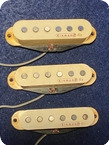Fender / Flame Robben Ford / 1984 / Nlack / Guitar
'84 FLAME Robben Ford Black EX+++ code FE790
At first glance this guitar looks like anything but a Fender, but those familiar with Robben Ford’s music will recognize it immediately. Early on Robben used these guitars before Fender’s custom shop started producing it as the Robben Ford Model and later on a Baker version continued.These are becoming harder to find and make great guitars for blues or jazz. This one is in great shape with only some very minor scratches in the belt buckle area but only in the finish and that’s being picky. As the photos show this instrument looks new and hardly played.
In the early 1980s, Fender offered two models under the Master Series. The Master Series models were produced in Japan. The Esprit and Flame models are dual cutaway, semi-hollow (tone chambered bodies) alder bodies with spruce or maple tops, set-in maple necks, ebony or rosewood fingerboards, 3-on-a-side tuners, and 2 humbucker pickups. The Esprit Standard model has the carved maple top and rosewood fingerboard; the Esprit Elite has bridge fine tuners, TBX electronics, and coil-tapping capabilities. The Esprit Ultra has a carved spruce top, ebony fingerboard, and gold hardware. The Flame models have a smaller body width than the Esprit, with the same model designations and appointments as the Standard/Elite/Ultra designations. Esprit and Flame models have their name designations on the headstock.
The Fender Master Series
By Gary Koehler
Approximately 25 years ago, Dan Smith had an idea. He conceptualized a solidbody guitar with routed chambers. These chambers would, in theory, provide a more resonant tonal characteristic. He also formulated and designed a basic shape for the guitar.
Then, in the early 1980s, Fender became interested in producing and marketing instruments which would be viewed as alternatives to those offered by Gibson. These guitars would not be copies, of course, but highly playable guitars with versatile electronics and other features previously unavailable on instruments manufactured by Fender. The company asked Smith to submit a concept, and what followed was an adventurous effort to produce a new line of guitars unique to the Fender’s catalog. The line was called the Master Series.
Two of Smith’s designs were solidified – the Flame and the Esprit (pronounced espree). Both featured alder bodies with routed tone chambers, maple tops, and set-in necks.
The Flame’s body is slightly larger than a Gibson Les Paul, and features two slightly offset cutaways, similar to Gibson’s SG. Two special-design humbucking pickups were developed via Schaller, as was a tailpiece with fine-tuners. The intention was to offer an electronically versatile alternative to the Gibson Les Paul.
The Esprit’s body is slightly larger than the Flame’s, and features two symmetrical cutaways. As with the Flame, two special-design Schaller humbuckers were employed in conjunction with the fine-tuning tailpiece. This instrument was intended as an alternative to the Gibson ES-335.
A third model was an archtop designed by the late James D’Aquisto. His design included some imaginative, versatile features and stands as a testament to D’Aquisto’s creativity as a luthier.
These three designs were marketed together as the Fender Master Series. Once designs were approved, the company turned its attention to issues of manufacturing and production. Fender decided that, at that time, it did not possess the technology to build the instruments. The Japanese company Fujigen Gakki (which served as an Ibanez facility) was contracted by Fender to manufacture the line. Fender ultimately decided to produce three models of both types. The suffixes Standard, Elite, and Ultra were added under the headings Flame and Esprit. Standards featured dot inlays and chrome tuners. The Elites featured diamond-flake inlays and pearloid-button tuners. And the Ultras had split-block shell inlays, ebony-button tuners and gold hardware. Finish options on the Standards were limited to black, autumn sunburst, and cherry sunburst. The Elite and Ultra were also available in white or pink frost, and candy red or candy green metallic burst
Smith said Fender offered the Kahler tremolo bridge as an option on these guitars. He recalls Fender made the modification post-production, and relatively few were shipped.
He was unable to find records indicating quantities made, but estimated that between late 1983 and 1985, a few thousand were manufactured. In retrospect, Smith feels the guitars were successful in regard to quality and public perception. The line’s downfall was the sale and subsequent transitional period experienced by Fender. In 1986, Robben Ford was brought on as an endorser of the Esprit model, then Fender reworked the production concept and dubbed the guitar the Robben Ford signature model.
Hendrix Guitars, Italy 
Welcome to HENDRIX VINTAGE
Hendrix Vintage is the first Vintage Collector in Italy with the best Vintage instruments Guitars Bass Amplifiers Effects carefully inspected to guarantee originality and high quality since 1978. All info in site: www.hendrixguitars.com
and also see: http://www.hendrixguitars.com/HendrixVintage.htm
All shipping handled by GLS or Poste Italiane Internationalexpress by air (Europe and World) for fast and reliable delivery with tracking. The payment is through money bank transfer (or MoneyGram or Wester Union or wise.com very easy directly from your credit card or your bank account see the web) Sorry no credit card. Particular care and attention to create an anti-breakage packaging.














